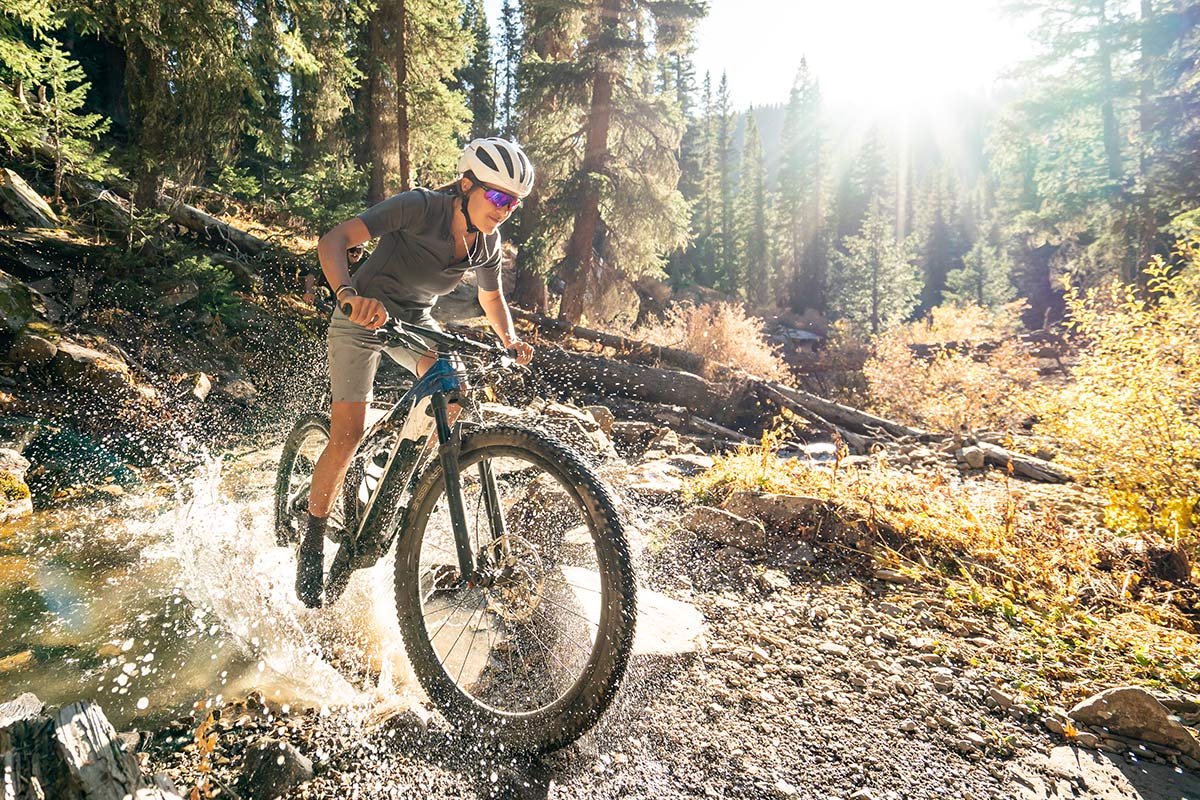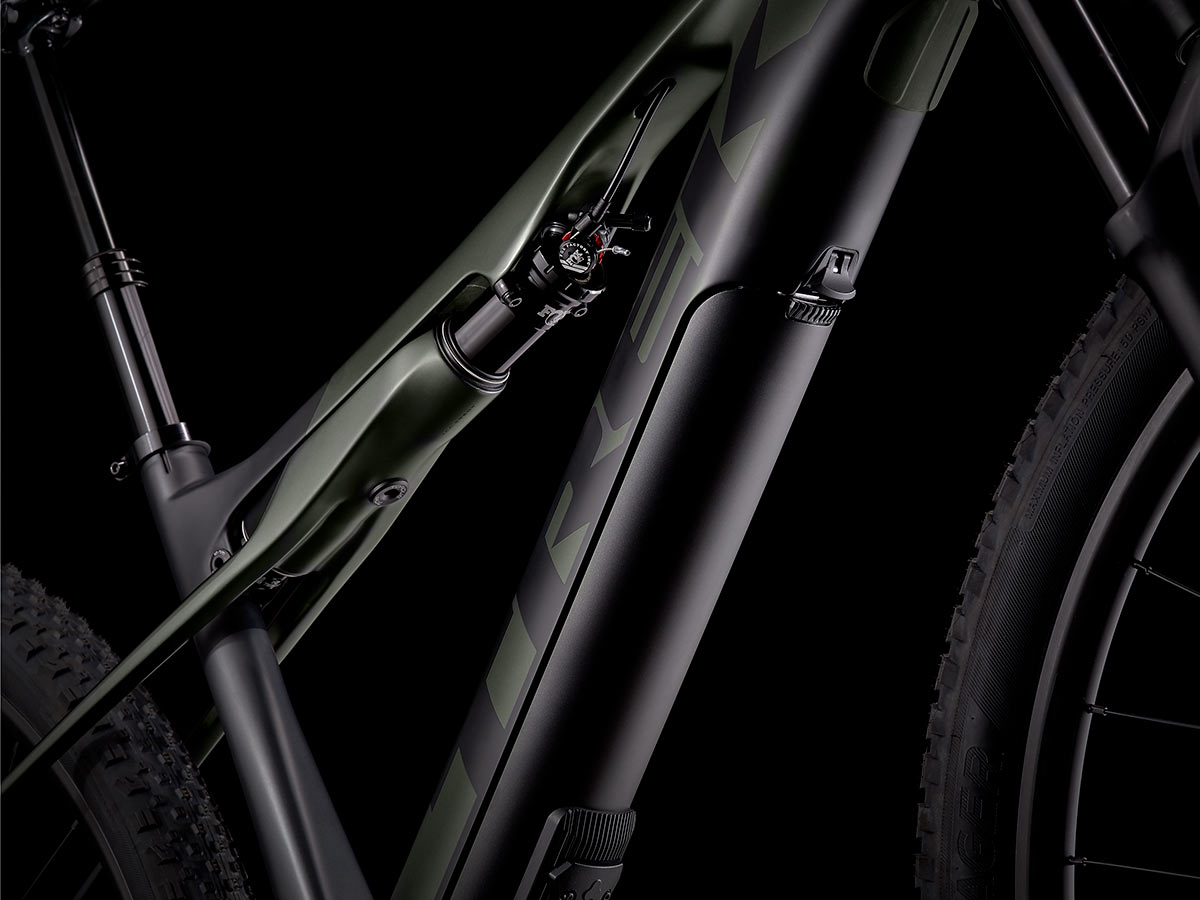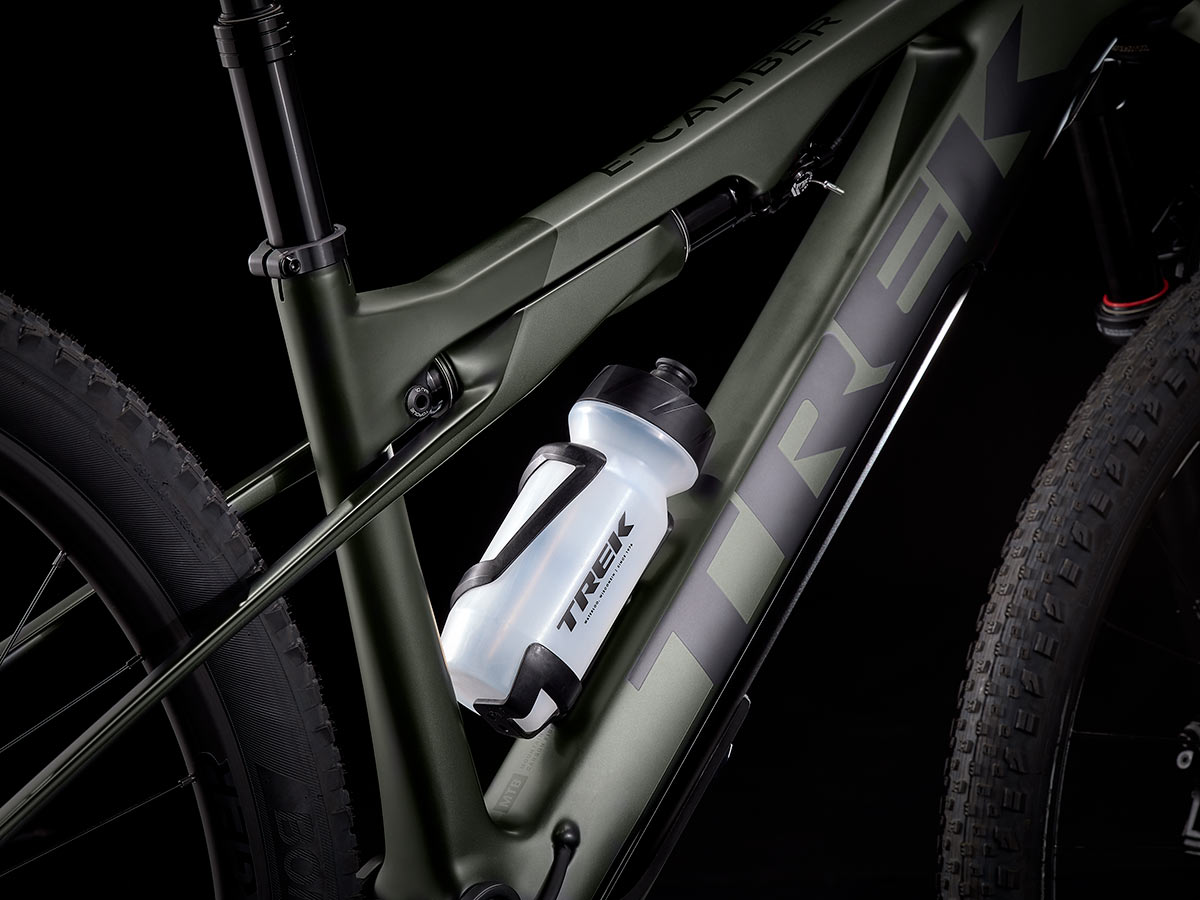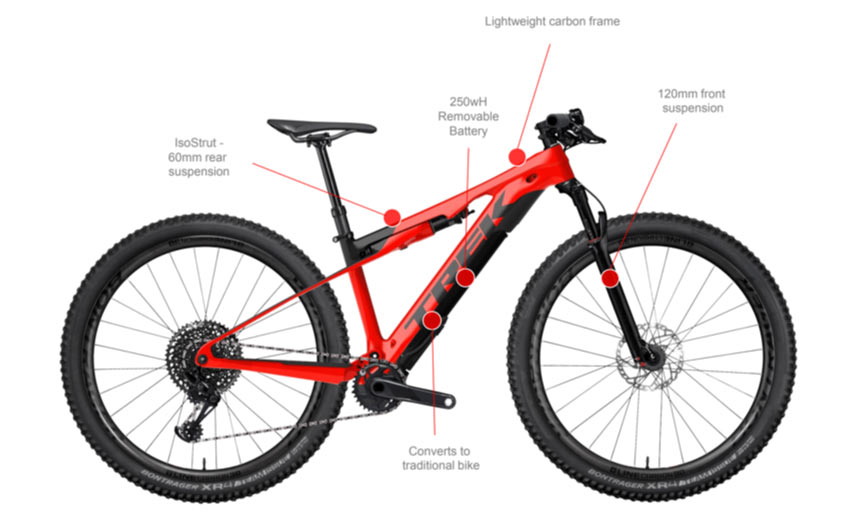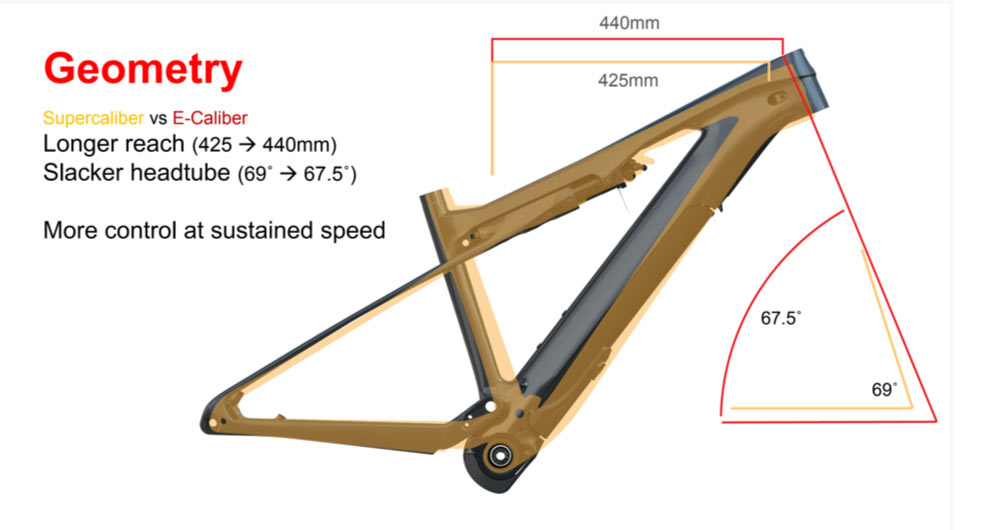The all-new Trek e-Caliber comes in as light as ~34lb in top trim, giving them a very lightweight full suspension e-mountain bike with a twist. Built around the Fazua motor-and-battery combo, you can quickly remove the powered drive system and have an “analog” mountain bike for any trail.
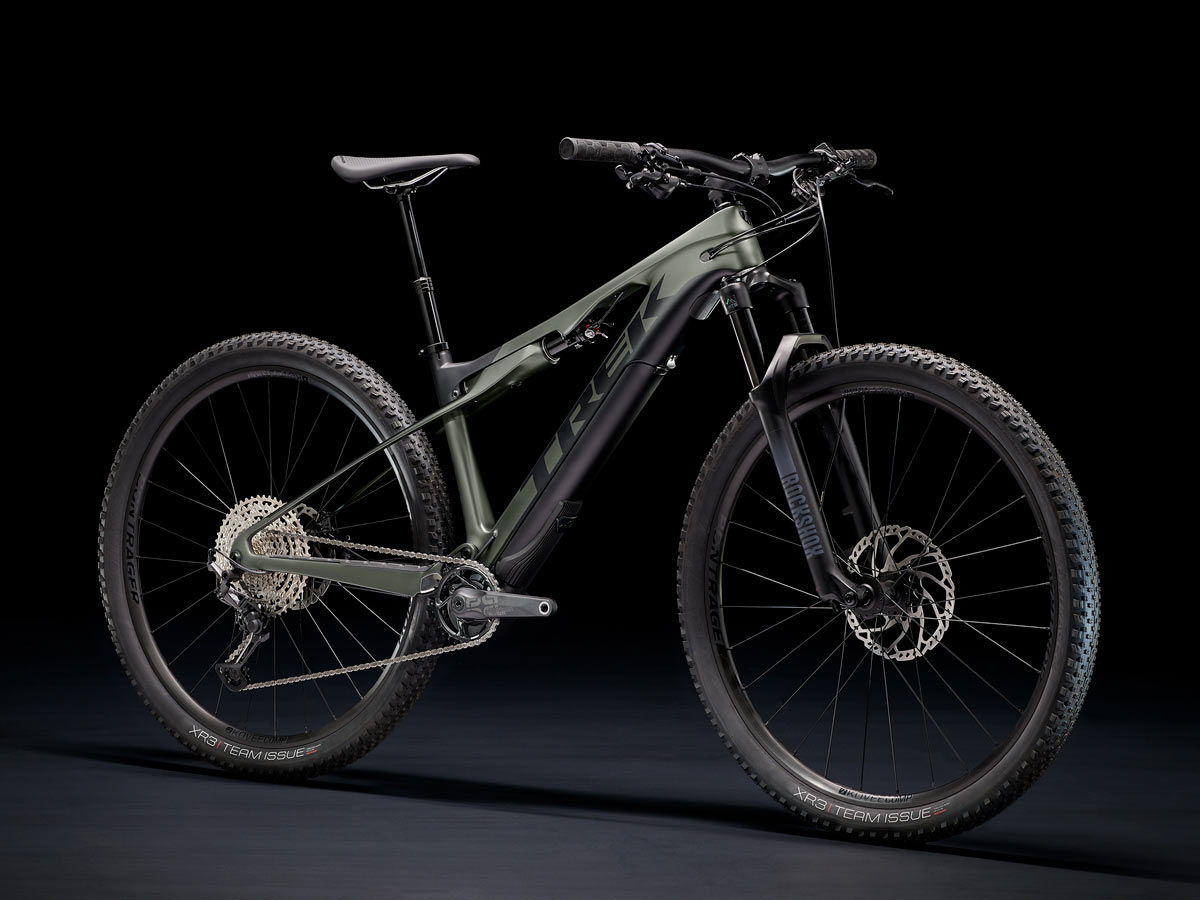
Based on their Supercaliber XC race bike, the e-Caliber is a short travel e-bike using the same fully-integrated IsoStrut rear shock. We reviewed the Supercaliber and tore down the entire shock assembly if you’d like to see how that works. Here, the idea is the same, to “enhance the true XC experience.”
The E-Caliber bikes are equipped with the internal Fazua Evation drive system, which offers 55Nm of torque, up to 43 miles (70 km) range, and three modes of assist activated by Fazua’s all-new bX remote.
The lightweight Class 1 drive system weighs just 10 lbs./4.6 kg, assisting up to 20 mph (25 kph). Trek says the system becomes unnoticable at higher speeds, without adding any drag or noise to your riding, which should be great for descending. Even better, Fazua’s latest Black Pepper OS gives it instant acceleration response and smoother power delivery at just about any cadence you’re like to pedal (50-120rpm, to be exact).
The system will even transmit your ride data to their app, and has Bluetooth to send it to your compatible phones and devices.
e-Caliber geometry & spec
In its lightest build, the Trek e-Caliber comes in at about 33lbs. Pull the Fazua drive system out, pop on the battery compartment covers, and it drops 6.4lbs (2.9kg) from the complete bike weight, giving you a 26.6lb (12kg) XC mountain bike…assuming you popped for the E-Caliber 9.9 XX1 AXS model at $12,999.
The headtube is 1.5º slacker than the fully analog Supercaliber, at 67.5º, with longer reach. And, they get a 120mm fork rather than 100mm, helping support the added weight and letting you get a bit more rowdy. The rear end remains at just 60mm of travel, though, so just a bit rowdier.
All models use an OCLV carbon fiber frame, here are the builds, prices and claimed weights:
- E-Caliber 9.9 XX1 AXS – $12,999 – 34.76lb (18.49kg)
- E-Caliber 9.9 XTR – $11,499 – 35.15lb (15.95kg)
- E-Caliber 9.8 XT – $7,999 – 37.45lb (16.99kg)
- E-Caliber 9.8 GX – $7,999 – 37.34lb (16.94kg)
- E-Caliber 9.6 Deore – $6,499 – 40.75lb (18.49kg)
All claimed weights are with stock setup, size Medium, setup with tubeless tires. The bikes are available now worldwide, online and through your local Trek dealer.
Learn more at TrekBikes.com.
